by Raffi Minasian –
There is no turning back. The collector car market has changed. Collector cars, formerly residing in the joyful and slow-paced purchase via rumination have become rapidly vaulted into wealthy investor portfolios and there is little evidence that these commodities are going to depreciate over short or long periods of time.
But what are the reasons behind the rapid (and recent) increases in prices of specific cars. How much of this momentum is sustainable, and what are the implications to long-time enthusiasts?
Is it Over For the “Normal” Guy?
Many feel that recent sales have signaled the end of the average guy being able to collect cars. But the truth is, substantial numbers of value-based products fill the collector market for all of us to enjoy. The bulk of the offerings remain “affordable”, restoration quality has never been better, and local events and shows seem everywhere.
As has been the case for years, the average guy can still find substantial numbers of great collector cars for the same price as a brand new sedan.
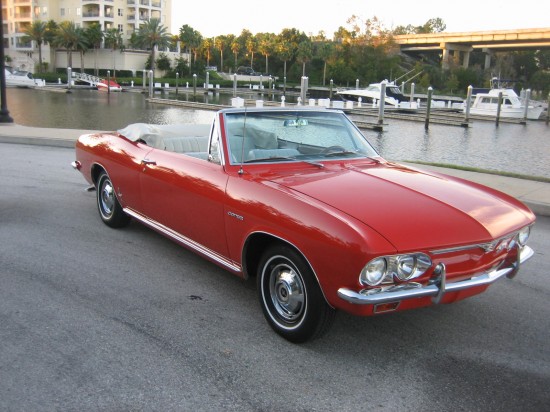
The Chevrolet Corvair Corsa – An Affordable Classic
This has proven true for decades. Most production-volume collector cars remain “desirable” based on condition and restoration, with some values greatly increased by original and rare options or special features when ordered new.
However, the “average” buyer is always going to purchase by prioritizing their enthusiast-based needs. The average buyer does not purchase collector cars solely as investments to diversify their portfolio – they purchase for the joy of use and partly as a statement of ego.
They buy cautiously and look for confirmation of condition, correctness of restoration, and hope their risks are mitigated by exhaustive research.
They worry, and this causes purchase hesitation. The average buyer worries about losing. Wealthy people worry about winning. The wealthy purchase with totally different triggers. Their deals happen quickly with fewer cars on offer.
Average buyers take a long time to make a deal and if they miss a particular car…they can wait for another.
No, it’s not over for the average guy. But if you want in on big returns, you have to be ready to risk quickly and with a lot of money.
The Drive to the Next Auction
Great hand made cars, one-of-a-kind cars, and cars with dynamic stories will always be sought after by the wealthy. What has proven to be true is that these rare cars are not overpriced today, rather they simply have remained unknown for too long and thus undervalued by the formerly small pool of worried and cautious buyers.
This has dramatically changed in recent years. The wealthy have a sense of urgency for acquisition that has no end in sight. Venture Capitol firms are not investing in companies that can earn 20% growth with $10 million market size.
They want billion dollar companies with 3000% ROI. The same voraciousness in our wealth sectors today permeate the collector car market looking for the equivalent of the next vehicular Facebook, Twitter, or Google.
During this accelerated time. the market is catching up on itself. In the process of catching up, a good argument could be made that two or three submarkets are emerging as buyers age, tastes evolve, and priorities shift. Though many collectors and market specialists speculate, no one knows for sure what the market cap for the collector car market truly is.
The meteoric rise of values over the past five years seems to come to a peak every year. Yet this January and eventually in August, we will see yet another rare exotic masterpiece of fine art/engineering come to auction where it will set another record and go on to a new home validating the owner and the marketplace in yet another string of owners who desire the very best, the most coveted, and have paid an astonishing price.
Why The Wealthy?
Most of us have no concept of the challenges associated with mega wealth. If we imagine winning $20 million in the lottery, we might pay off our house, debts, help relatives we like (imagine that line up), maybe even help out a few friends. When we run out of ideas, we install the remaining $19 million at the local Bank of America.
But this has problems – the money is only insured up to $250k and many banks are not offering much in the way of interest. So what does one DO with $19 million?
Now let’s look at the portfolio of a very wealthy person. Let’s say this person has assets in the hundreds of millions. He has mega money in stocks, real-estate, and other investment entities. Not only are the assets robust, but the income from those assets are generating $20 million per month, every month.
This accrual presents logistical challenges. You cannot hide this much cash under a mattress (the physical volume would overwhelm you) and you can only safely invest so much in stocks and bonds before you become too heavily weighted on single market swings, thus putting too large a portion of your wealth at risk.
Now, it might surprise you to learn that this imaginary wealthy person is not an anomaly – on the contrary. Globally, there are increasingly more and more people becoming wealthier by the month and many of them are eager to shore up an investment portfolio with a range of risk.
In 2013 a record number of 210 NEW billionaires were added to the list of an already large number. Overall, in 2014, billionaires saw their wealth increase by 18%. The multimillionaire sector was also in the double-digit growth range.
This growing audience of investors needs to diversify and protect their money in a range of assets.
Enter the Collector Car
Collector cars are unique from both a personal and monetary perspective. Unlike art, the car is a culturally embraced object of uniform desire. One can argue the aesthetic merits of a Picasso painting (as many do) but few (regardless of culture, age, or economic status) argue over the beauty and grace of nearly ALL 1950-1970 Ferraris.
Further, this uniform agreement on the visual desirability translates into performance and use to include events, shows, and subsequent bragging rights when exhibited (none of which accompanies art or sculpture).
Lastly, un-restored cars offer a buyer the unique feature of feeling as though he/she has become a part of history either by preservation or restoration of the car.
Few would ever consider themselves in the same role with a painting.
The craft alone would not allow it, let alone the audacity of such an exercise. Yet a key feature of any big dollar car is the ownership provenance, often times in support of little more than forgotten barn storage passing as “preservation”.
World Desire, Use and Liquidity
If simply uniform world desire and use for beautiful cars were the only factors that fuel acquisition we might not see the meteoric rise we have experienced. The trifecta lies in the rapid liquidity of these assets, historically at a profit. For the past decade, we have seen dramatic growth in multiple auction venues, sales through private party, and an increasing world-market size that fuels the sale and resale of these cars at a rapid rate.
The Ferrari market alone has seen an average of 200% growth in the past five years for front engine 12 cylinder cars. Public shows and events further showcase the use and majesty of ownership while televised auctions present 15 minutes of fame for the highest bidder.
Twenty years ago, the sale of a unique car was limited by specialty magazine Hemming’s, local clubs or regional auctions, and word-of-mouth. Today world audience auctions have increased market scope and buyer numbers and thus, competition for the greatest cars becomes tighter and tighter – resulting directly in escalating prices.
The public display around the ease of sale essentially lightens the risks of purchase. A wealthy person will not only invest in one car, he might buy several at one auction.
Finally, the collector car market is relatively easy to enter. Literally dozens of experts in the field are available to aid in purchase decisions, all that is required to store and maintain a car is a garage and insurance, and unless someone has been sheltered through their teenaged years – immediate and joyful gratification comes from the familiar use and adventure of driving.
Once again, something that art, sculpture, or other collectible assets fail to offer in return.
Buyer Behavior and Perception Makes the SUPER Value Car
A common misconception around the value of collector cars is rarity. But rarity alone will not generate the greatest interest in a collector car. Production cars are, for the most part, purposefully built with volume in mind.
The “artisanship” of a steel bodied production car seldom displays the same visual qualities of a hand-made car.
Hand made cars offer not only the crafted quality of “an original”, they retain the integrity of the original artistic statement.
One of a kind is ALWAYS one of a kind, whereas production cars, if 5,000 were made but only 50 survive, they still remain 50 production cars. Origin always dictates provenance, no matter the ownership string, barn history, or restoration.
Value always connects to the source of the object – and most wealthy people invest as close to the source of the original, be it beauty, ideas, technology, or invention.
Cars of sound provenance are generally considered more valuable than similar ones with lesser provenance. But story alone is not dictating deep rises in the values of cars. Rather, the competitive nature of the wealthy, the acquisition behavior, and the need to fulfill that conquest at a high level, confirms the wealthy individuals desire to own the very best.
These people are not wealthy by observing, they’ve generally earned their wealth by acquisition.
Most of them are eagerly searching market opportunities and finding not the best “deal” or trying to time the market. These car collectors are buying into a market as early adopters, often times setting record prices that make them appear crazy one year, and genius the next.
They are making the market as they confirm the values, both publicly for those who cannot compete, and against others who CAN compete. It is not enough to buy the best car, it must be done with public command at auction.
Even anonymous purchases seldom remain secrets as the car eventually finds a home within an exhibit or at a major show with the new owner listed as part of the growing provenance.
Car Collectors as a group have evolved significantly over the last decade. Market research and buying trends aside, there is one more compelling reason collector cars continue to be in high demand. New cars are more spectacular and technically sophisticated than ever before.
Multiple digital interfaces effectively make modern driving a more immersive experience. Thus, by comparison, driving an old car becomes a more unique and singular experience, void of the tech, comfort, and sensorial detachment we experience in our daily lives. In short, collector cars offer a reconnection to a time when we were mentally and physically focused on just the drive.
Whatever your financial situation, the collector car will forever offer a reprieve from the daily grind – at any price.
Investor or Collector, peace of mind in this increasingly fast-paced world will always be found behind the wheel of a collector car.
This discussion began in this article – The Collector Car Market Today.
Let us know what you think about the collector car market in the Comments.
About the Author
Raffi Minasian is a widely published automobile designer, illustrator, writer, historian, and Pebble Beach Concours d’Elegance Class Winner. His impressive twenty plus year career includes aircraft interior design for Boeing, toys for Mattel and McDonald’s, consumer products for Honeywell, Polaris, and Rainbird, and car designs for Toyota, Subaru, Moal Coachbuilders and The Franklin Mint. Raffi’s automotive work has been featured on “World of Wheels”, “Speed Vision Network”, TLC “Rides”, and the “Fine Living Network”. Raffi has achieved the “Award of Excellence” from Car Styling magazine and was part of the design/build team for the 2005 Americas Most Beautiful Roadster “Sedeuced”, and published the first Ferrari Hybrid concept in 2008. He has authored articles for Autoweek, High Performance Mopar, and The Diecast Magazine, and his designs have been featured in Car Styling, Forza, and Automobile magazine.
See Raffi’s other My Car Quest articles here.
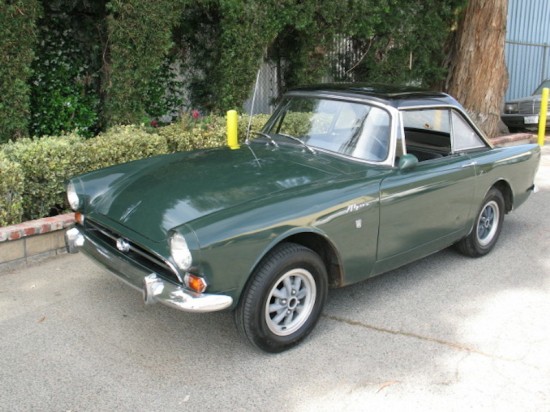
Sunbeam Alpine – Another Affordable Classic

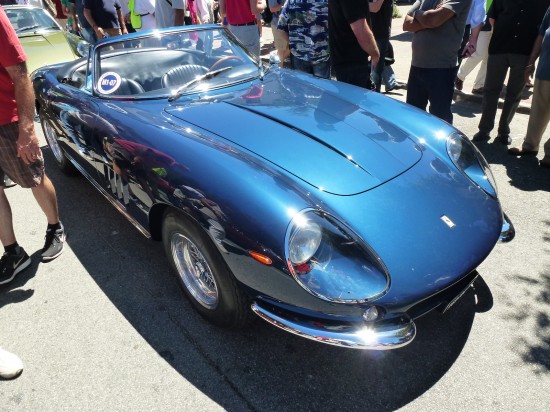

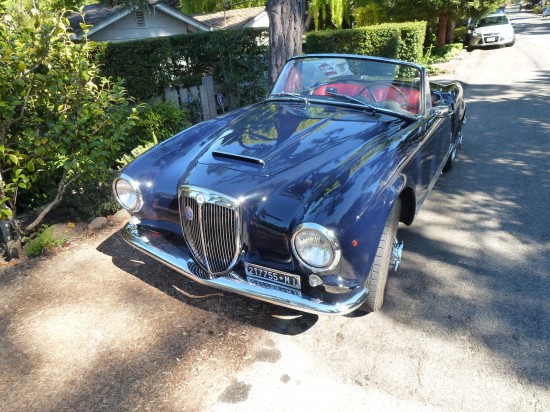
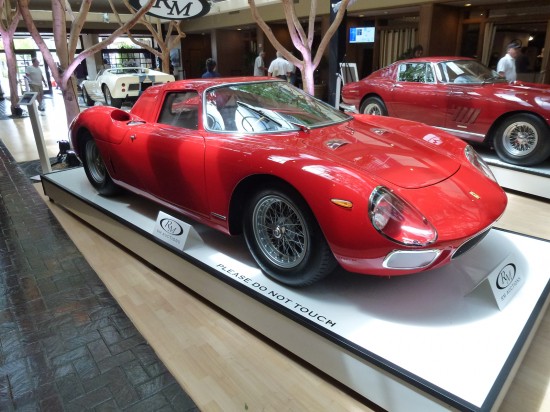

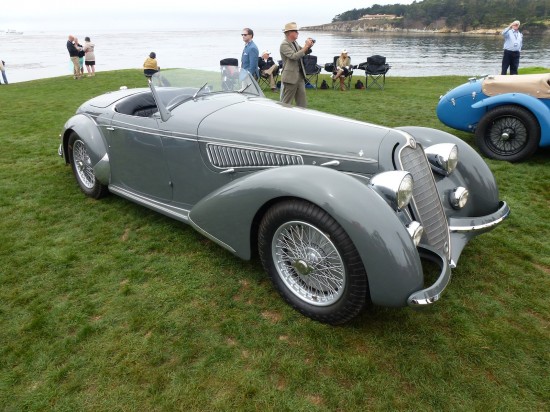
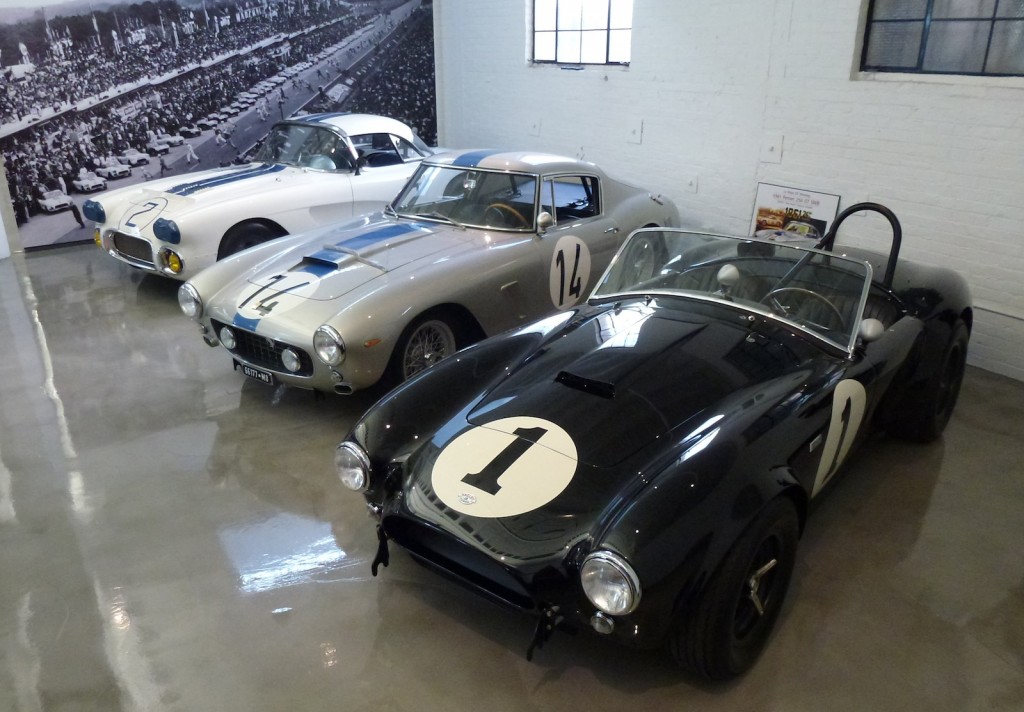
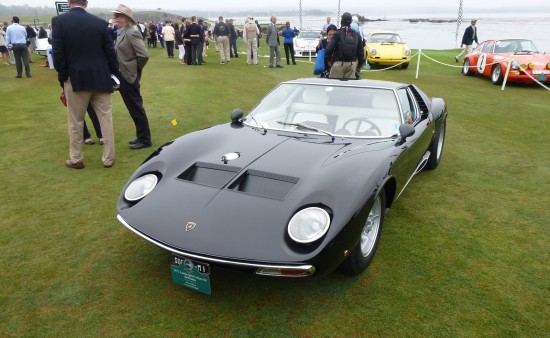


Probably the most thorough and insightful evaluation of today’s collector car I’ve read anywhere.
Thank you Myron. The hobby is changing in many ways. My perspective over the near 40 years of buying is that this time is unprecedented, yet not unpredictable.
I only wish he touched upon the root cause of the collector car acceleration: Easy Money / Low interest rates / Federal Reserve manipulation in the markets. Everything is a function of price and the more money you print the less goods there are to soak them up.
Kudos for getting past all the individually hyped perspectives offered by others.
Thank you Wayne – there is a lot of hype out there now, always is when the pool of interested buyers scale up the desire and money.
The best, most comprehensive overview of the collector car market I have read.
Thank you @Gumushian.
Really impressed by the depths of Rafffi’s comments. Wanted to add that I also detect no small amount of abandonment of fine art paintings as investments, especially when even a deceased artist’s family cannot tell a real one form a fake. As this article from the Wall Street Journal in 2011 said:
“Is That Warhol Fake? Even His Foundation Isn’t Sure
By KELLY CROW
October 20, 2011
How can you tell if an Andy Warhol silkscreen is the real thing or a fake? Even the Pop master’s own art foundation has given up trying to tell the difference.
The Andy Warhol Foundation for the Visual Arts said Wednesday that in coming months it plans to shut down its authentication board—the only independent arbiter of the legitimacy of Warhol works that turn up on the art market.
The six members of the authentication board, which include museum curators from San Francisco and Denver, will issue rulings for its remaining caseload of about 175 possible Warhols before closing up shop for good, said Michael Straus, chairman of the foundation’s board.
Joe Simon, who sued over his purported Warhol “Self-Portrait,” above. Nick Rhodes
Mr. Straus said a recent string of costly legal disputes with collectors contesting the board’s findings influenced the board’s decision to give up its role as the “final word” on the late artist’s creative output.
One of the highest-profile disputes involved a London filmmaker, Joe Simon, who sued the board four years ago after it refused to vouch for his purported Warhol “Self-Portrait.”
By the time Mr. Simon dropped his suit last November, the artist’s foundation had spent more than $7 million defending the board’s ruling, with help from major law firms like Boies, Schiller & Flexner.”
That article goes on. Suffice to say that millions is spent on fake art every year. Now I know full well there are rebodied fake “classics” such as a fake short wheelbase Ferraris (real Ferrari chassis, but from different less desirable model) but it is a lot harder to fake a whole car that has SN numbers here and there on the engine, chassis and gearbox than it is to fake a painting. Plus can you drive a Picasso through the Malibu tunnel at 7,500 rpm? I think not. You only live once.
And another appeal of the classic car is Who It Sits You Next To. For instance, if I were a Chinese businessman, a new Billionaire, I would like to sit next to a Peter Sachs at an event and shoot the bull. But Peter meets billionaires every day, so maybe he would welcome me more at his table if, hey, I own a racing Ferrari from the Sixties too. So just like joining the Bel Air Country Club, buying certain cars puts you at the same table where you find some of the movers and shakers in American business–I think that is another reason why the rich are notching up collector cars for their portfolios.
In the context of an investment class? Will “Collector Cars” be the first in history to not suffer regression to the mean? We will see.
Contrasted with upper echelons of fine art, a couple worthwhile distinctions.
Paul Cézanne’s The Card Players can be sewn into a suit jacket and travel Globally w/ total impunity in a few hours in the Gulfstream. A 250 Lusso? Maybe not so much.
Collector Cars at the most fundamental consideration, are mechanical contrivances. And most are rather primitively constructed, by todays standards and impermanent (file under Carrozzeria Touring’s Superleggara ) Short being suspended in a bag of Argon, cars are ALWAYS physically degrading ultimately awaiting their next restoration and deflection from “original”.
The Oil Painter? kept in modestly sympathetic conditions, virtually immutable.
Socrates had it right –“no human condition is ever permanent” and that is particularly true for personal fortunes. They come and go as do the associated assets and asset class they are valued in.
…it is written.
Fun read all the same Raffi..
All the best Optimader
“…Toward the end of August, the bellwether Russia Principal Bonds were trading below $10. Carlos’ net worth was reduced by almost half. He was dismissed. So was his boss, the head of trading. The president of the bank was demoted to a “newly created position.” Board members could not understand why the bank had so much exposure to a government that was not paying its own employees—which, disturbingly, included armed soldiers. This was one of the small points that emerging-market economists around the globe, from talking to each other so much, forgot to take into account. Veteran trader Marty O’Connell calls this the firehouse effect. He had observed that firemen with much downtime who talk to each other for too long come to agree on many things that an outside, impartial observer would find ludicrous (they develop political ideas that are very similar). Psychologists give it a fancier name, but my friend Marty has no training in behavioral sciences.
Nassim Nicholas Taleb, Fooled by Randomness, pg. 115, loc. 1753-60”
@Optimader, many excellent points including the entropy of all things, particularly those man made. However, strangely, a higher percentage of handmade cars survive over the vast number of paintings, sculpture, poetry, prose etc from centuries of prolific artisans. Art, as it happens, embodies a culture and thus demons who wish to eradicate evidence of that culture, destroy their art. This does not happen with cars and that seemingly odd reverence is part of the mystique that keeps them alive, restored, and cherished.
http://en.centralemontemartini.org/collezioni/galleria_fotografica
enjoy this, a cool place if your ever in Rome
Thanks Raffi for such an insightful and balanced essay on a question that is in the minds of car collectors from many different countries.
Furthermore, the answer to yet another question like ‘is this a bubble?’ Or ‘when will prices become normal again’, may require a follow-up writing.
Greetings from Athens, Greece.
Totally agree Byron. In fact, while much of the conditions will remain for a while. within ten to twenty years I believe very different market conditions will result in a new perspective on the car collecting world. Most of this change will be fueled by new interest in cars from different countries and a whole new generation of affluent young people with little to no nostalgic affinity to cars at all.
Raffi, Wonderful article! Great insight into the market. I am not familiar with your writings, but I sure am a listener. Thanks , Don Meluzio
Hi Raffi,
Very nice article. And yes of course you do make some very valid points. However as with all comments made by people who invariably have a certain interest in preserving the value of their “investment”(myself included) I do wonder if we are just simply making a case to suit our ears. Of course you could also argue that someone who argues the opposite and who has no interest in preserving the value of their investment simply because they have no cars in their possession, is perhaps talking the market down in the hope that they will be able to buy something at a more affordable price!
In the end I don’t think anyone knows and we can speculate all we want as to the dynamics at play here, and in the end normal market forces will prevail which means that the classic car market, like all markets, will continue to have highs as well as lows that no one can predict..
One thing I do wholly agree with you however is the fact that it is very likely that there will be a whole new generation of affluent young people in the future who may have little to no affinity to cars at all which will affect market dynamics.. And I think this will be down to a combination of the various “techno distractions” these kids are experiencing as they grow up and of course the increasing coming of the electric vehicle. But of course we shall see how this pans out! Regards
Alex
Of course it is possible that I speak positively of the market so that I can benefit from the growth of it, but monitory gain in the context of my car ownership is only secondary to the experience of driving and working on the cars. I got into cars for the joy of it. Money that comes out of it is also joyful but not the primary motivation. Had that been the case I would have become a classic car dealer.
Markets will have ups and downs, but there are only so many desirable cars to go around so as long as desire remains strong, values paid will be high. Value and price paid are different things of course, but history shows that when people of means desire objects of limited availability – prices rise.
And indeed we will see a shift in the new generation of affluence, much of which we cannot predict but it is fun to speculate upon.
Great article. Perhaps my favorite section was your note that, the average buyer is hoping not to loose, whereas the wealthy buyer is looking to win. That rings so true. Like you, I agree that more thought/research, and therefore time, might be taken by the “average buyer” trying to mitigate a potential loss with their purchase. Question: Do you suppose the “average buyer” views their cars as an extension of their personalities more than the wealthier buyer?
I am not a car collector, although I am a fan of the automobile. As you perfectly described in the article, I suppose I have not invested in car collecting because of my belief (prior to your article) that this is a sport for the wealthy. Perhaps it is time for me to venture out and buy that dream car from my youth – a 1977 brown Trans Am.
Great article. I will check back in for future articles.
Leonard
The late 70’s Trans Ams are becoming more and more sought after by people who owned them in their youth and enjoyed the thrill of driving, but also (as you note) used them as an extension of their personality. The wealthier buyer does by to some extent the objects that reflect their taste or aesthetic, but seldom on a personal interest basis – more so on a calculated or market-strength basis.